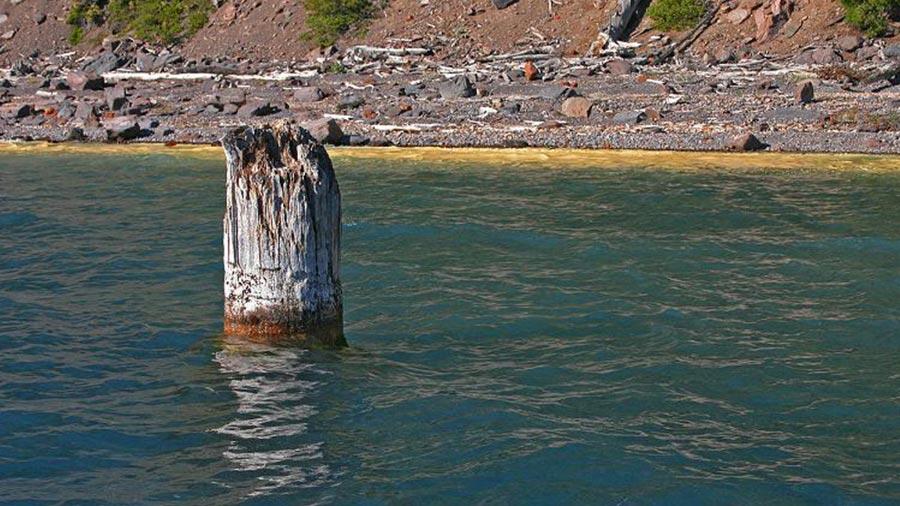Seeing a log floating on the waters of a river is not new. In the streams traveling guarded by a forest, broken branches falling from trees are swept downstream and are suspended on the surface in stagnant areas. But visitors to the national park Crater Lake in Oregon can admire a phenomenon out of the ordinary.
If these pieces of wood usually move horizontally on the liquid film, the trunk looks in this pond volcanic rises vertically as if their roots were anchored to the bottom. The strange thing is that long ago ceased to have them clasped to the substrate and height (nine meters) does not cover the depth of the lake.
The huge chunk of dead plant, which is nicknamed the “old lake” takes at least 120 years plying the waters in this manner. There have been several scientists who have studied since its discovery in 1896, but have not yet found the ultimate explanation for a phenomenon that completely defies the laws of physics.
The first to spot the woody navigator, who stands about 1.2 meters above the surface, was the geologist and explorer Joseph Diller. In 1902, Diller published the first scientific paper on the “old lake”, explaining that the trunk had traveled about 400 meters over the five years following the sighting. In a later study, the trunk accelerated its pace during the summer of 1938 and moved almost 100 kilometers in just three months thanks to the impulse currents and winds.
Although Diller discovered in the nineteenth century, carbon dating techniques have revealed that this is a real old fogy: it has at least 450 years old. However, it becomes a youngster when compared to Crater Lake, located in a huge basin 655 meters deep formed about seven thousand 700 million years after the collapse of Mount Mazama volcano.
The water reserve, which is now part of a nature park namesake, currently has about 592 meters deep making it the deepest US and the world’s ninth. Inside scarce life: just grow algae or plant species, and there is no sediment on the ground, hence the dark blue waters.
One of his few people, a kind of moss genus Fontinalis sp. which grows about 120 meters deep, also inhabits the mysterious trunk, suggesting that the tree had to be in touch with deeper waters in the past 120 years. But what really arouses curiosity of scientists and visitors is its vertical position: how does stand straight like that?
Because, according to the laws of physics, the center of mass of any floating object with a uniform density is above its center of buoyancy. So the “old lake” should sail with its axis horizontal, like any other trunk of your measurements.
There is no definitive theory, but scientists have developed several hypotheses to explain his strange verticality. Some suggest that water falling over a century ago, the roots of the trunk was loaded with stones whose weight would have remained in that position. The problem is that currently there is no rock, which discredits this idea.
Others point out that, over time, the submerged part of the tree would have gained increased density and weight while the aerated dry area has remained all these years. “This apparent equilibrium allows the trunk to be stable in the water,” they say from the Crater Lake Institute.
For the moment, which has already become a claim more for tourists, continues to sail on the waters indifferent to the expectation created among his admirers. For those responsible for the national reserve, the old trunk “has personality and a story that is already part of the park.”











